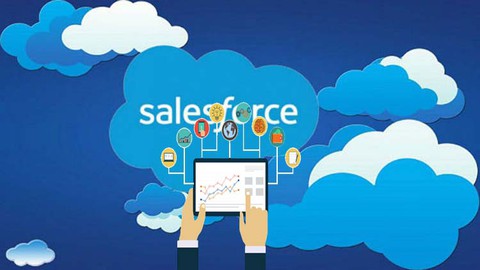
Certified development lifecycle and development designer
Certified development lifecycle and development designer, available at $44.99, 2 quizzes.
You will learn about All of the domains are covered properly Cover all domains Covering all the domains and explaining everything 24 × 7 Instructors help available This course is ideal for individuals who are Technical Lead or Developer Lead or Project Manager or Release Manager or Environment Manager or Technical Architect or Developers or Testers It is particularly useful for Technical Lead or Developer Lead or Project Manager or Release Manager or Environment Manager or Technical Architect or Developers or Testers.
Enroll now: Certified development lifecycle and development designer
Summary
Title: Certified development lifecycle and development designer
Price: $44.99
Number of Quizzes: 2
Number of Published Quizzes: 2
Number of Curriculum Items: 2
Number of Published Curriculum Objects: 2
Number of Practice Tests: 2
Number of Published Practice Tests: 2
Original Price: $19.99
Quality Status: approved
Status: Live
What You Will Learn
- All of the domains are covered properly
- Cover all domains
- Covering all the domains and explaining everything
- 24 × 7 Instructors help available
Who Should Attend
- Technical Lead
- Developer Lead
- Project Manager
- Release Manager
- Environment Manager
- Technical Architect
- Developers
- Testers
Target Audiences
- Technical Lead
- Developer Lead
- Project Manager
- Release Manager
- Environment Manager
- Technical Architect
- Developers
- Testers
The Salesforce Certified Development Lifecycle and Deployment Designer credential is designed for professionals who have the requisite skills and experience at managing Lightning Platform development and deployment activities, and effectively communicating technical solutions to business and technical stakeholders.
The Salesforce Certified Development Lifecycle and Deployment Designer has experience analyzing the environment and requirements to design an appropriate governance framework, and to manage the development and deployment lifecycle on the Lightning Platform. The designer has experience designing and implementing complex development and deployment strategies, as well as communicating the proposed solution and design trade-offs to business and technical stakeholders alike.
The Salesforce Certified Development Lifecycle and Deployment Designer typically has the following background and experience:
-
B.S. degree in Computer Science or equivalent degree
-
Two to three years of Salesforce Platform experience
-
One to two years of Salesforce experience working or managing Salesforce projects
-
One to two years of experience working in a steering committee
-
Completed at least one end-to-end software development lifecycle project
The Salesforce Certified Development Lifecycle and Deployment Designer candidate has the experience, skills, knowledge, and ability to:
-
Communicate development methodologies and trade-offs.
-
Provide alternatives to development methodologies.
-
Ensure Governance through change management and release management.
-
Ensure Governance in environment management.
-
Develop and execute effective deployment strategies.
-
Use technical tools to execute deployment strategies and environmental approaches.
-
Describe the capabilities and characteristics of metadata API.
-
Describe the capabilities and constraints of the tools available for accessing the Metadata API (Ant Migration Tool, Forcedotcom IDE, and Change Sets).
-
Describe source control and continuous integration, how they are used, and when they should be recommended.
-
Utilize testing methodologies.
-
Describe strategies to restore and back up.
-
Understand deployment KPIs.
-
Follow Salesforce release schedules and know how they may impact deployments and projects.
A candidate for this exam will likely need assistance with:
-
Environment configuration.
-
Code development.
-
Test execution.
-
Code migration.
-
Configuring continuous integration/development architectures.
-
Setting up a governance process.
A candidate for this exam is not expected to know how to:
-
Write ANT migration scripts.
-
Set up the source control environment.
The Salesforce Certified Development Lifecycle and Deployment Designer exam has the following characteristics:
-
Content: 60 multiple-choice/multiple-select questions
-
Time allotted to complete the exam: 105 minutes (time allows for unscored questions)
-
Passing Score: 68%
Contents
The Salesforce Certified Development Lifecycle and Deployment Designer exam measures a candidate’s knowledge and skills related to the following objectives.
ENVIRONMENTS
-
Given a customer landscape and their requirements, evaluate business, technical, and architectural considerations while defining an appropriate org strategy.
-
Given a customer scenario, define an environment (sandbox) strategy that utilizes the correct sandbox types (e.g., multiple project streams, training requirements, staging, production, and hotfixes).
-
Apply map sandbox strategy to a specific Release Plan, taking into consideration multiple project streams, training requirements, staging, and hotfixes.
-
Given a customer scenario involving a new Salesforce release, recommend the appropriate strategy to mitigate risk.
-
Given a detailed customer environment scenario including a specific request, explain the implications for incorporating the request directly in a production environment.
-
Given a customer scenario, explain how source control branching/versioning/merging can be used and recommend appropriate strategies.
APPLICATION LIFECYCLE MANAGEMENT
-
Given the project risk and customer requirement, explain how to assess the benefits and risks of the different development methodologies and recommend the appropriate methodology based on the customer environment.
-
Given a customer scenario, describe and recommend an appropriate release management strategy.
TESTING
-
Given a customer scenario, describe and recommend an appropriate testing methodology.
GOVERNANCE
-
Given a customer scenario, analyze and recommend the appropriate governance framework.
RISK IDENTIFICATION AND MITIGATION
-
Understand customer environment risks and articulate appropriate mitigation strategies.
CHANGE SETS
-
Given a scenario, compare, contrast and recommend the components and tools of a successful deployment strategy.
METADATA API
-
Given a scenario, describe the capabilities, limitations, and considerations when using the Metadata API for deployment.
CONTINUOUS INTEGRATION TECHNIQUES
-
Given a complex customer scenario ability, identify the appropriate use of source control, automated test, and deployment tools and demonstrate the ability to articulate the process involved.
METHODOLOGY TOOLS
-
Explain the advantages of using agile tools to support an agile development process.
UNDERSTANDING PACKAGES
-
Given a scenario, analyze and explain the use cases and considerations when using managed vs. unmanaged packages.
Sample Questions
1. Universal Containers is having problems with developers overwriting code and blaming each other for unit test failures. Because their Salesforce org produces financial reports, their legal counsel has also recommended that they begin auditing changes to the system for compliance reasons.
What recommendation should a Technical Architect make to address both issues?
Choose one answer
A. Periodically export Salesforce system audit logs to an offline database.
B. Implement a Source Control system and require developers to commit changes to source control.
C. Require developers to work in separate sandboxes and periodically merge code into a single Software Integration sandbox.
D. Implement a Requirements Traceability Matrix.
2. Universal Containers (UC) has purchased a new application from a partner to enable advanced quoting. UC just hired a developer to help modify the application to meet their needs.
Which two package types should the Architect recommend?
Choose two answers
A. Unmanaged package developed in a Partner Developer Edition org.
B. Managed package developed in a Partner Developer Edition org.
C. Unmanaged package developed in a Developer Edition org.
D. Managed package developed in a Developer Edition org.
3. What consideration should an Architect take into account when asked for a recommendation of Agile vs. Waterfall?
Choose one answer
A. Rapidly changing business requirements.
B. Project budget and timeframe.
C. Number of stakeholders involved.
D. Technical complexity of the project.
4. Universal Containers (UC) has a highly customized org. A Salesforce release is coming up soon, and UC has sandboxes that have already been upgraded to the next release.
What two actions should UC take to ensure that their customizations are not affected by the new release?
Choose two answers
A. Execute all unit tests in the upgraded Sandbox to validate that code has not been affected.
B. Review code in the upgraded Sandbox to ensure that no automatic updates were applied to the code.
C. Testing is not necessary, because Salesforce tests all code and configuration before each upgrade.
D. Review the updated features of the release, and perform functional testing to understand the impacts of updated features.
5. A Salesforce release is coming up soon, and Universal Containers (UC) has sandboxes that have already been upgraded to the next release. UC has been developing code in an upgraded Sandbox, and needs to deploy code to Production which is still on the previous release.
What is required to deploy these changes to Production?
Choose one answer
A. No adjustments are necessary, because all metadata types will deploy normally to Production.
B. It is not possible to deploy from an upgraded Sandbox to an older Production version.
C. Versioned metadata needs to be downgraded to a previous API version before deployment.
D. No adjustments are necessary, as long as the deployment is from a Full Sandbox.
Pay one time and ensure your success by practicing exams from exam experts. The price you pay is worth to pay for certification exams again and again.
Every concept has been covered and explained. Practice these tests and pass your exam with confidence.
Course Curriculum
Instructors
-
CertifyMe …
"Unlock Success: IT Cert Exam Preparation Journey"
Rating Distribution
- 1 stars: 0 votes
- 2 stars: 0 votes
- 3 stars: 0 votes
- 4 stars: 0 votes
- 5 stars: 0 votes
Frequently Asked Questions
How long do I have access to the course materials?
You can view and review the lecture materials indefinitely, like an on-demand channel.
Can I take my courses with me wherever I go?
Definitely! If you have an internet connection, courses on Udemy are available on any device at any time. If you don’t have an internet connection, some instructors also let their students download course lectures. That’s up to the instructor though, so make sure you get on their good side!
You may also like
- Top 10 Financial Technology Courses to Learn in December 2024
- Top 10 Agile Methodologies Courses to Learn in December 2024
- Top 10 Project Management Courses to Learn in December 2024
- Top 10 Leadership Skills Courses to Learn in December 2024
- Top 10 Public Speaking Courses to Learn in December 2024
- Top 10 Affiliate Marketing Courses to Learn in December 2024
- Top 10 Email Marketing Courses to Learn in December 2024
- Top 10 Social Media Management Courses to Learn in December 2024
- Top 10 SEO Optimization Courses to Learn in December 2024
- Top 10 Content Creation Courses to Learn in December 2024
- Top 10 Game Development Courses to Learn in December 2024
- Top 10 Software Testing Courses to Learn in December 2024
- Top 10 Big Data Courses to Learn in December 2024
- Top 10 Internet Of Things Courses to Learn in December 2024
- Top 10 Quantum Computing Courses to Learn in December 2024
- Top 10 Cloud Computing Courses to Learn in December 2024
- Top 10 3d Modeling Courses to Learn in December 2024
- Top 10 Mobile App Development Courses to Learn in December 2024
- Top 10 Graphic Design Courses to Learn in December 2024
- Top 10 Videography Courses to Learn in December 2024






















